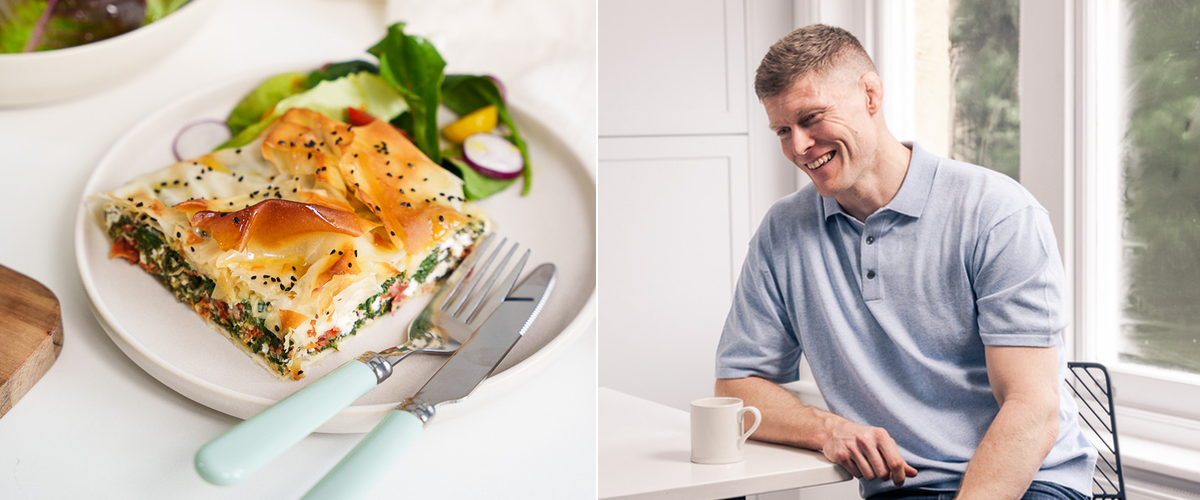7 Ways To Lower Blood Pressure
Worried about high blood pressure levels? Here are seven small and surprising ways you can keep your levels within a normal range.

What is blood pressure?
Blood pressure (or hypertension) measures the force of blood against blood vessel walls. Ideal blood pressure ranges between 90/60mmHg and 120/80mmHg. High blood pressure, or hypertension, is 140/90mmHg or more.How does high blood pressure affect your health?
High blood pressure puts an extra strain on your heart, forcing it to work harder. “This can cause thickening in the heart, which can lead to heart failure,” says Vanessa Smith, senior cardiac nurse for the British Heart Foundation. “High blood pressure can also damage artery walls, making them prone to hardening and increasing your risk of heart attack and stroke.”How to lower blood pressure
Making certain lifestyle changes could help reduce your blood pressure. “Don’t pick and choose,” says Smith. “It’s the combination of changes that has the best effect.” Here are some ways to help lower your blood pressure:1. Maintain a healthy BMI
Being overweight hinders blood flow, forcing your heart to pump harder. One study found that losing just 3% of your body weight could help reduce your blood pressure.2. Watch fish swimming
Yes, strange as it sounds, scientists found that staring at swimming fish is so calming that it can reduce blood pressure by 4%. “If you’re under chronic stress, your blood pressure will stay high as stress hormones keep your body prepped for fight or flight,” says Hicks. No fish to hand? Try yoga, meditation or deep breathing exercises instead.3. Watch your salt intake
“The sodium in salt draws water into the blood cells, increasing pressure inside the blood vessels,” says Tracy Parker, senior dietitian for the British Heart Foundation. But it’s more than just relegating salt to the cupboard; cut down on hidden salt, too. “Unfortunately 75% of our salt is already in food, for example bread, processed meats and cereals,” says Parker. “Compare nutritional labels and choose lower-salt products.”4. Drink a glass of beetroot juice a day
A systematic review reported that beetroot juice may reduce blood pressure. The vegetable contains a plant chemical called nitrate, which helps keep blood vessel walls healthy. Don’t like beetroot? Dark green leafy veg, such as spinach and kale, are rich in nitrates, too.5. Squeeze some cardio into your routine
One study has shown that regular cardio exercise – for example running or brisk walking – can lower high blood pressure. Researchers suggest that exercise may keep blood vessel walls healthy and calm the nervous system. “Keeping active as much as possible will also help you lose weight – and this can further cut blood pressure,” says Hicks. In fact, according to Nuffield Health, you could lower your risk of blood pressure-related issues by 30% in as little as 12 weeks if you stick to a regular exercise plan.6. Eat blood pressure-lowering foods
Choose a balanced diet, making sure you eat plenty of these four particular nutrients – calcium, magnesium, potassium and fibre, says Parker. “While each nutrient has a different effect on the body (for example calcium improves blood vessel elasticity), the combination of these four nutrients has been shown to reduce blood pressure.” Here’s where to find them:- Calcium – green leafy vegetables, soya beans, dairy foods and fortified plant milks
- Potassium – bananas, broccoli, parsnips, pulses, chicken
- Magnesium – green leafy vegetables, wholegrains, nuts, dairy food
- Fibre – fruit, vegetables, pulses, nuts and seeds, potatoes in their skins
7. Switch to low or zero-alcohol whenever you can
According to Harvard health researchers, drinking too many units of alcohol on a regular basis can significantly increase your blood pressure. Time to explore some delicious alcohol-free cocktail recipes.How to check your blood pressure
Ask your GP or pharmacist, or book in for a 30-minute Vitality Healthcheck. The check measures blood pressure plus BMI, glucose and cholesterol levels, too. Did you know that a blood pressure check is included in all of Vitality’s health checks and screenings? Plus, you can benefit from 50% off screenings with partners such as Bluecrest, Nuffield Health and BMI.Recent articles

More than a parkrun: ‘It’s all about the community’
parkrun has given Mark more than he could have ever imagined – not least a budding community that he can rely on through the good and the bad

Eat your greens! 3 spinach recipes to enjoy this spring
Spinach is in season and our resident nutritionist, James Hudson, has rustled up 3 family-favourite recipes for you to enjoy this spring

How to become the perfect workout buddy
With group running found to have the same impact on mental health as a course of anti-depressants, there’s never been a better time to enjoy the benefits of social exercise
